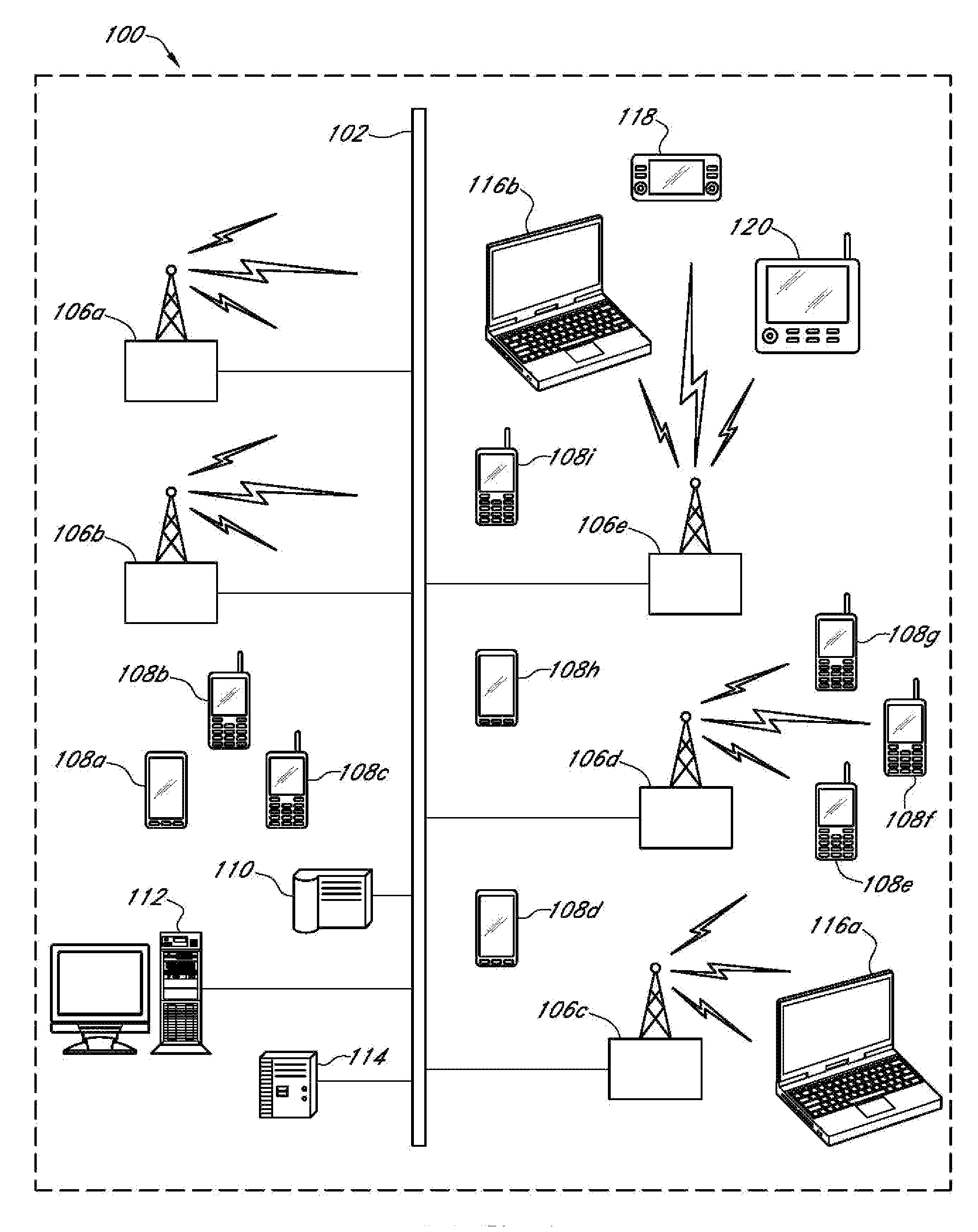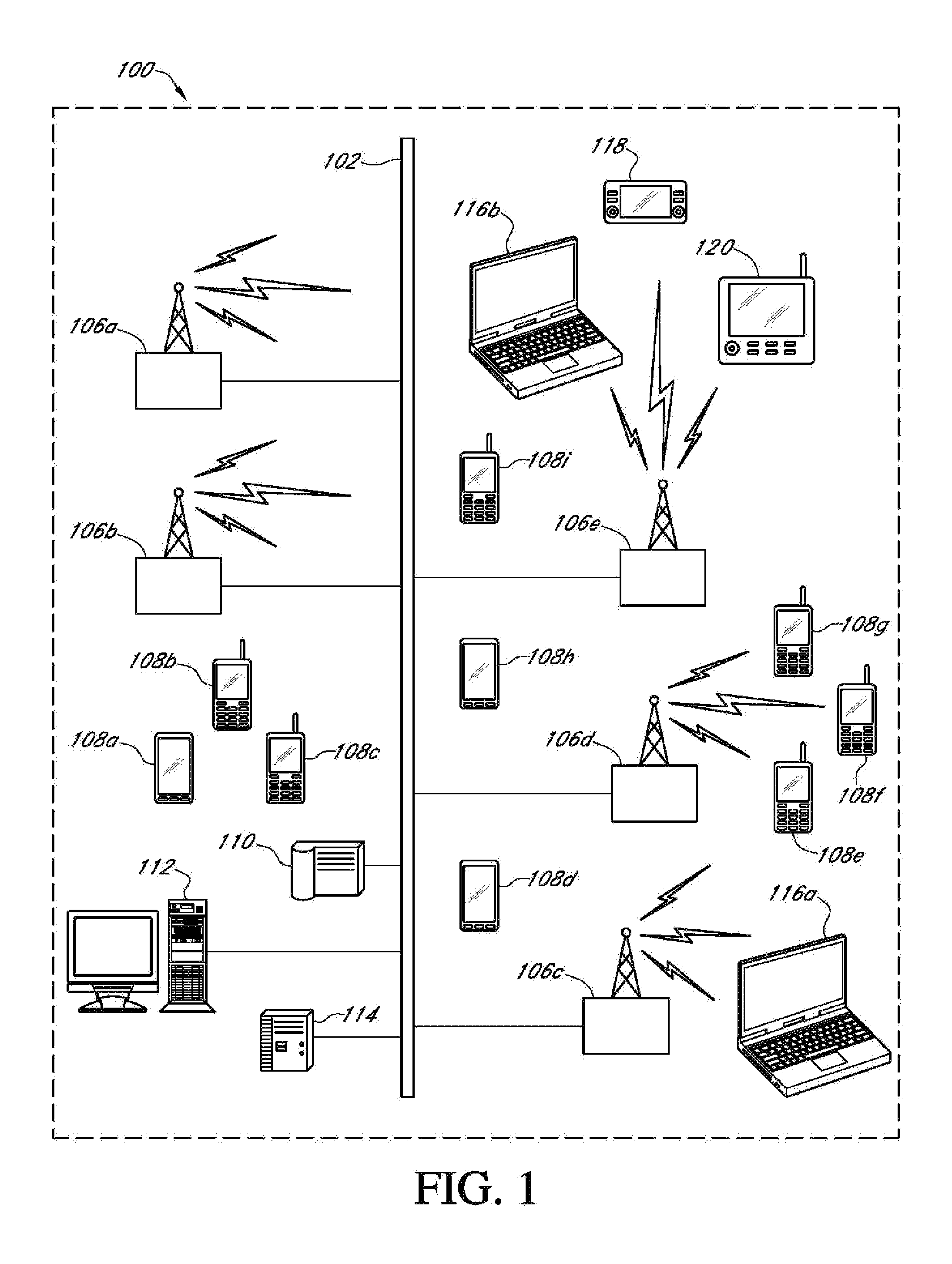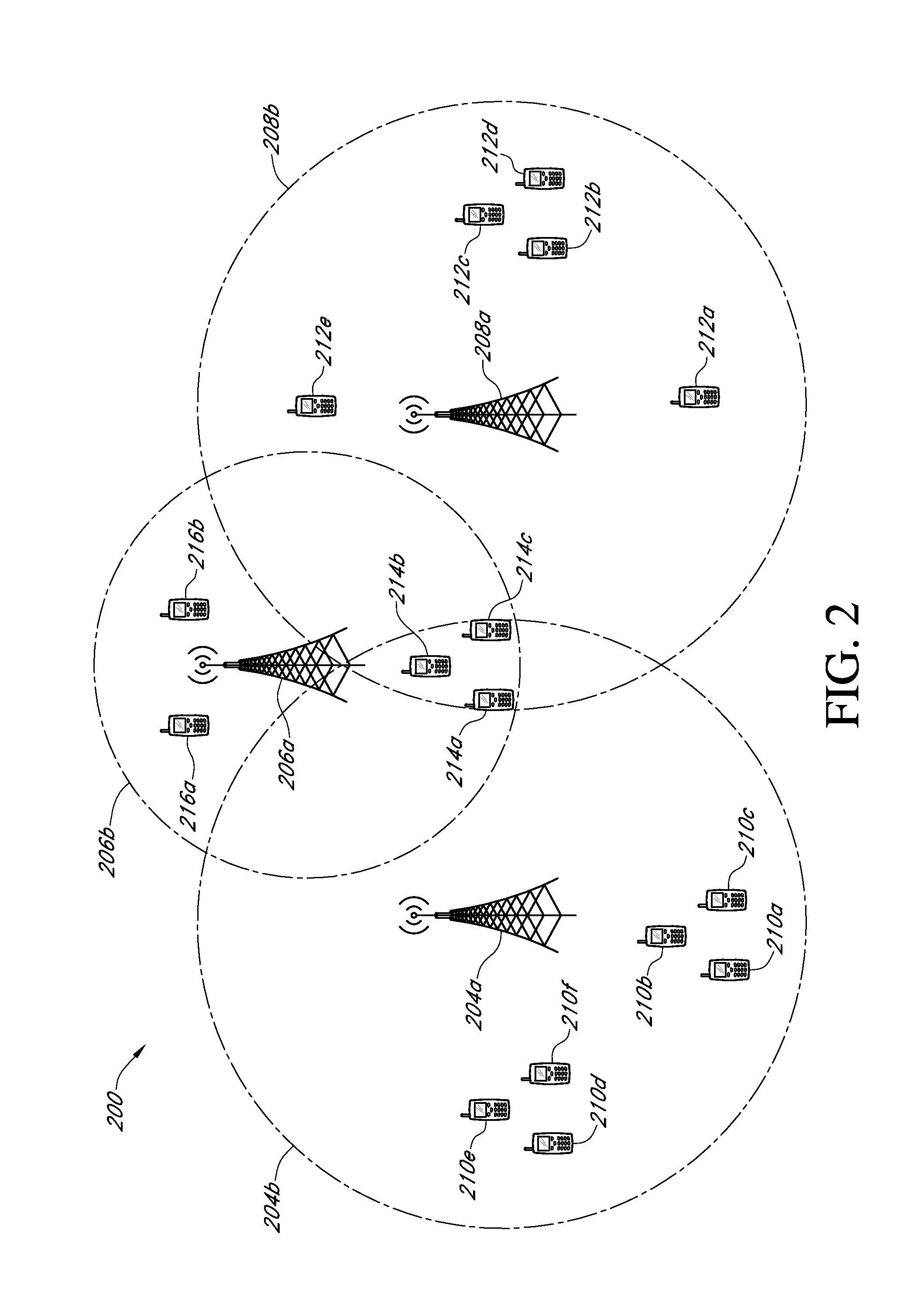Systems and methods for mitigating intercell interference by coordinated scheduling amongst neighboring cells
a technology of coordinated scheduling and neighboring cells, applied in the field of emerging 4 g selforganized networks, can solve the problems of unique network resource consumption and co-channel interference patterns, affecting the network capacity and/or quality of particular network cells, and reducing compensating for these phenomena is more difficult, so as to facilitate centralized power scheduling
- Summary
- Abstract
- Description
- Claims
- Application Information
AI Technical Summary
Benefits of technology
Problems solved by technology
Method used
Image
Examples
Embodiment Construction
[0039]In accordance with an exemplary embodiment of the present invention, FIG. 1 illustrates a networked computing system 100 including various wireline and wireless computing devices that may be utilized to implement any of the interference mitigation processes associated with various embodiments of the present invention. These processes may include, but are not limited to network communications state determinations (e.g., interference metric determinations), network resource monitoring, neighboring cell negotiations / rankings, and intercell power scheduling processes. The networked computing system 100 may include, but is not limited to, a group of service provider controller devices 110, 112, and 114 (any of which may be Network Resource Controllers (NRCs) or have NRC functionality, defined further herein); network base stations 106a-e (any of which may be NRCs or have NRC functionality) that may share overlapping wireless coverage with one or more neighboring base stations withi...
PUM
 Login to View More
Login to View More Abstract
Description
Claims
Application Information
 Login to View More
Login to View More - R&D
- Intellectual Property
- Life Sciences
- Materials
- Tech Scout
- Unparalleled Data Quality
- Higher Quality Content
- 60% Fewer Hallucinations
Browse by: Latest US Patents, China's latest patents, Technical Efficacy Thesaurus, Application Domain, Technology Topic, Popular Technical Reports.
© 2025 PatSnap. All rights reserved.Legal|Privacy policy|Modern Slavery Act Transparency Statement|Sitemap|About US| Contact US: help@patsnap.com



